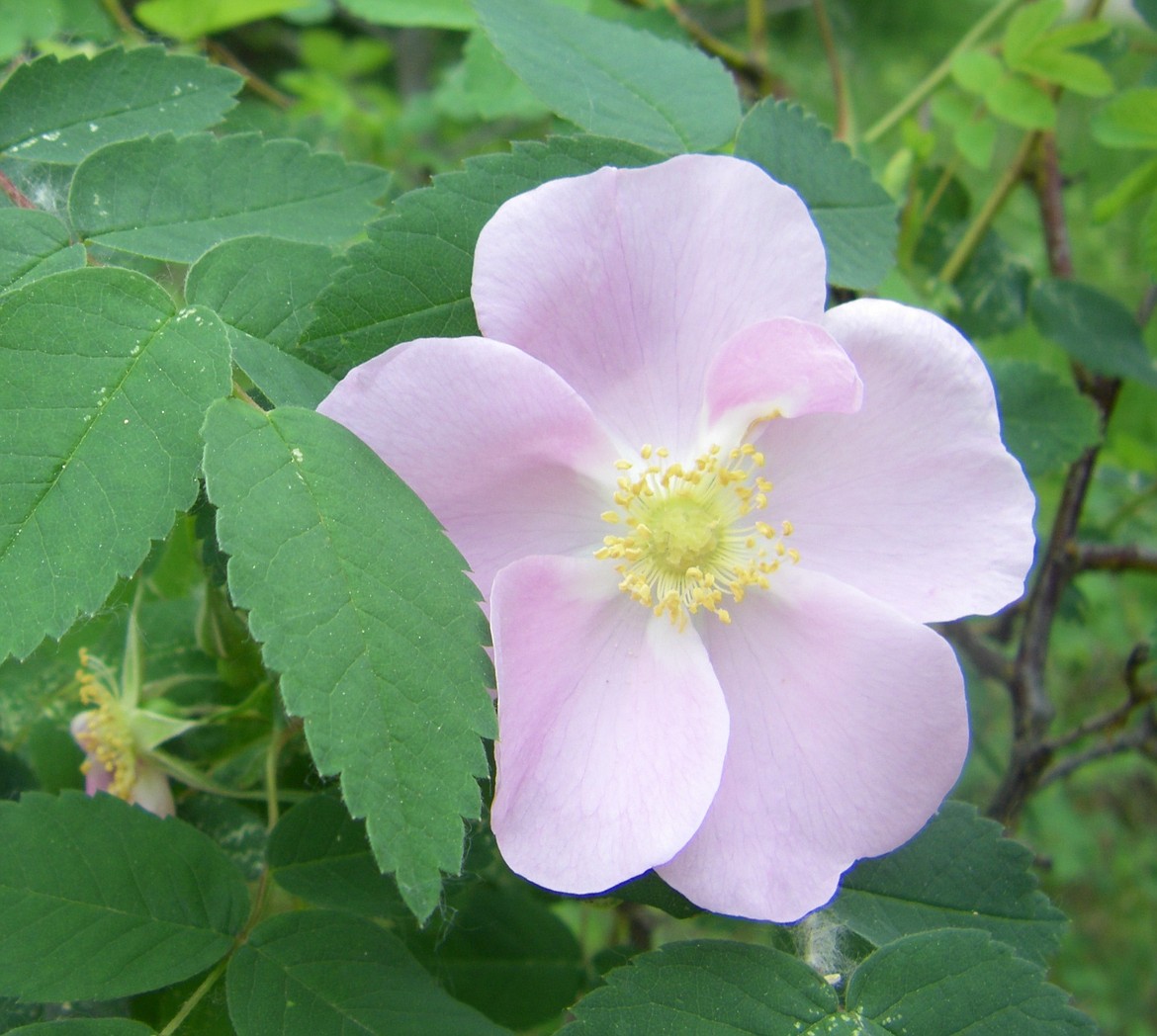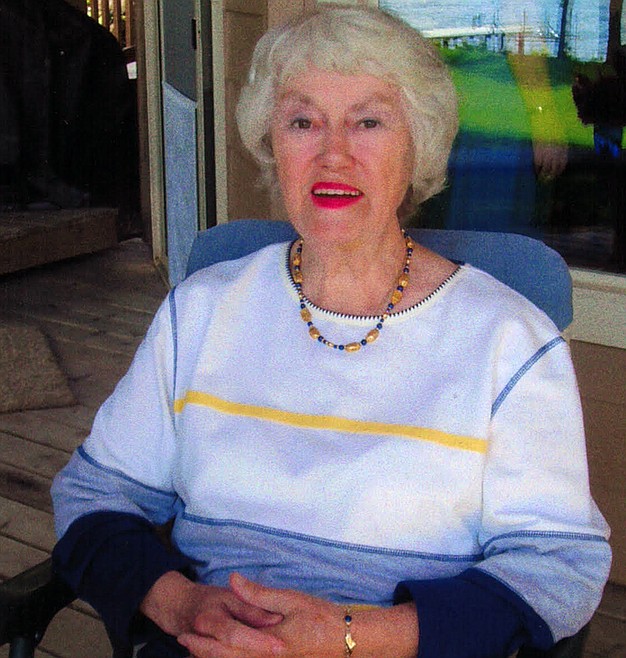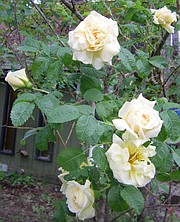All about roses: Pruning, wild rose primer and old roses
Of all the flowers in all the world the rose is Number One in history, literature and legend. Today, we’ll begin a pleasurable two-part look at the rose saga, exploring its many facets. First though – a practical point: pruning Our miserable, fussy, frustrating winter has made spring chores iffy at best, but as soon as possible, check out your plants. Here’s how.
Snip out crossing canes, and old yellow or diseased-looking leaves. Too, be sure to clean up any that have fallen on the ground under the plants. Take out old wood (grey rather than brown or green), as well as damaged and/or diseased wood. Re-tie canes to support for wind/storm protection. If you wish to “shape” a shrub rose, snip the tips of canes for balance, making the cut just above a bud or leaf cluster so as not to have a bunch of naked stems sticking up. Do not fertilize yet.
That’s pretty much all there is to it, and now simply play the waiting game for friendlier weather.
Wait to plant new bushes till late May or early June. All hardy Rugosa species need nothing other than the planting-time shot of fish emulsion but thrive in our acidic soil as do all native plants.Though you may find several species of roses in your travels through our landscape, only three are considered native to this area; they are the Baldhip rose (Rosa gymnocarpa); Nootka rose (Rosa hispida); and Pearhip or Wood’s rose (Rosa woodsii). A fourth, the Prickly Rose (Rosa acicularis var.) is listed in the Native Plant Society landscaping list as “pink flowers, very spiny”; I am not familiar with this rose.
Each of the first three has special features that make identifying them pretty easy. Probably the easiest is the Baldhip by virtue of its dense armament of straight and soft but thorny prickles on older branches. Leaves are pinnate (feather-like) with 5 to 9 serrated leaflets. The flowers, which bloom from June through July, are small (often only one inch wide) and sweetly fragrant. The hips are orange to red, and small.
The Nootka rose can be spindly or stout, depending on soil and location, so can be found growing from 3 to 7 feet tall. The alternate, pinnate leaves have 5 to 7 leaflets. There are a pair of flattened, straight to slightly curved thorns at the base of each leaf. The flowers are large – from 2 to 3-inches long, pink and solitary at the ends of branches. They bloom from May through July. The fruits are large, round and purple-red.
The Wood’s or Pearhip rose grows from 3 to 7 feet tall, with freely branched stems that can either contain a pair of thorns at the base of each leaf or not. Younger shoots are generally bristly. Leaves are alternate pinnately compound with 5-9 leaflets which are coarsely toothed. The small (1 to 2-inch) flowers are pink and usually borne on branch-ends in few-flowered clusters appearing from May through July. Fruits are dark red and round to oval.
All of the wild roses are considered as beneficial edible and/or of medicinal benefit. The fruits (rose hips) contain more Vitamin C than an orange and the seeds are rich in Vitamin E. They can be eaten raw or stewed, and last through the winter when other fruits are unavailable. A common denominator of all these roses is the alternate, pinnately compound leaf arrangement, the fact that each of the flowers have five petals, and that all of them are hardy from sea level to about 4,500 feet.
The yellow Harbison’s (or Harrison’s) rose from southern Idaho is a lovely multi-petaled beauty common around North Idaho for decades, and though not originally native here is, I believe, now accepted as such. I treasure mine, which has been growing for me since I moved to this site in 1990.
Wild roses are available at several area nurseries, are easily transplanted, and are a boon in your landscape, especially in hedgerows and groupings. The best news is they are care-free. Don’t fertilize them ever; they’re used to lean, acidic soils; and like the pretty country girl in gingham, they’ll outshine the hussies in satin every time!
Roses come in a plethora of shapes and sizes: arching, rambling, dense, open, upright, climbing, suckering, groundcover, spreading, and in every bloom style imaginable – and the most magnificent of them all are the Old Roses. And by “old” we speak of many centuries – most with origins in Persia, China and Turkey.
A circa 1453 painting at the Topkapi Museum in Istanbul shows a Red Damask Rose held by Sultan Mehmet, Conqueror of Constantinople – and many of the roses of medieval gardens came to Europe from the East, brought back by returning crusaders and visitors to the Ottoman court. They are genuine antiques: Gallicas, Centifolia (Cabbage), Moss, China, Damask, Alba, Portland, Bourbon, Noisettes – all lavish, rich and voluptuous – and often hardy.
The Empress Josephine created a legendary rose garden of Old Roses – still maintained – at Malmaison in France. It is to my everlasting grief that when I had the opportunity to visit it, I passed it up. She commissioned famed flower painter Redoute to paint many of them, providing samplers to this day of their glory. Next week, we’ll explore those available and hardy here in our Rocky Mountain surroundings. Till then!





